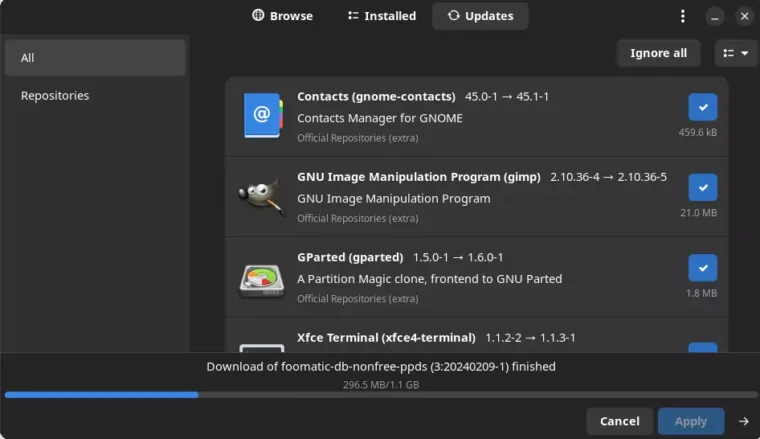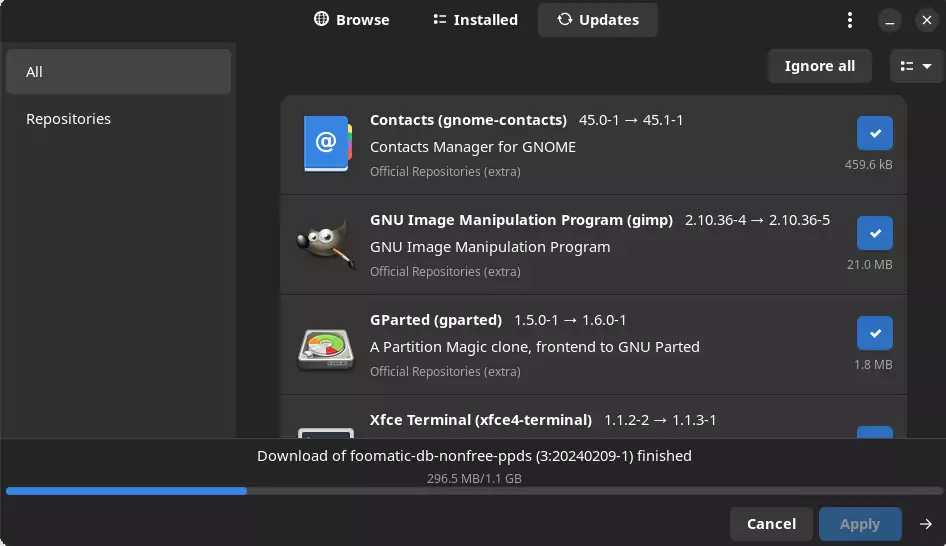Today, we tried to “brake” Manjaro (Gnome) but couldn’t
At Fedorum, we primarily use Ubuntu as the main distribution due to its widespread adoption among developers of AI software. However, we have also incorporated Manjaro Linux Gnome Edition into our network for added benefits and variety. I
In this article, we will discuss our experiences with updating Manjaro, compare it to Ubuntu in terms of software packages and performance, highlight its impressive Timeshift implementation, and evaluate whether certain startups could run Manjaro exclusively or if Ubuntu is still needed.
Updating Manjaro Linux: A Smooth Experience

Years ago, updating Manjaro was considered tricky; but in a recent major system upgrade using only the GUI Package Manager, we were pleasantly surprised by how smoothly it went, even with NVIDIA drivers involved. This update, which totaled over one gigabyte, demonstrated that Manjaro has made significant improvements in its updating process.
Manjaro Linux vs Ubuntu: Software Packages and Performance
One of the key advantages of Manjaro over Ubuntu is its access to slightly newer software packages as shown in the table below.
| Manjaro | Ubuntu 23.10 |
|---|---|
| HandBrake 1.7.3-1 | HandBrake 1.6.1 |
| Evolution Mail: 3.50.4 | Evolution Mail: 3.50.0-1 |
This is particularly beneficial for startups working on cutting-edge AI applications that require more up-to-date tools and libraries. Additionally, Manjaro performs well in graphics-intensive jobs such as Blender renders, Automatic1111, and similar AI applications.
Impressive Management of Snapshots with TimeShift
Another impressive feature of Manjaro is its implementation of Timeshift. Unlike previous experiences with Timeshift on other Linux distributions, Manjaro efficiently manages snapshot storage without filling up entire partitions. With a dedicated 100 GB for Timeshift, it only uses about 20 GB and adheres to the specified number of snapshots, eliminating wasted hard drive space.
Manjaro vs Ubuntu: Suitability for Startups
As an ongoing experiment, we are considering whether certain startups could run Manjaro exclusively or if Ubuntu remains necessary. So far, Manjaro has passed all our tests with flying colors. However, we do not recommend Manjaro for laptops that rely on external displays due to potential compatibility issues. For workstations focused on graphics, web design, and AI applications, Manjaro is currently a top contender in the Linux distribution landscape.
Conclusion
Incorporating Manjaro Linux into our startup network has been an enriching experience. Its smooth updating process, access to newer software packages, impressive Timeshift implementation, and excellent performance in graphics-intensive tasks make it a strong alternative to Ubuntu for workstations. Startups focusing on graphic design, web development, or AI applications should consider giving Manjaro a try as an exclusive distribution option. As our experiment continues, we will keep monitoring its performance and compatibility to determine if it can fully replace Ubuntu in our startup environment.




